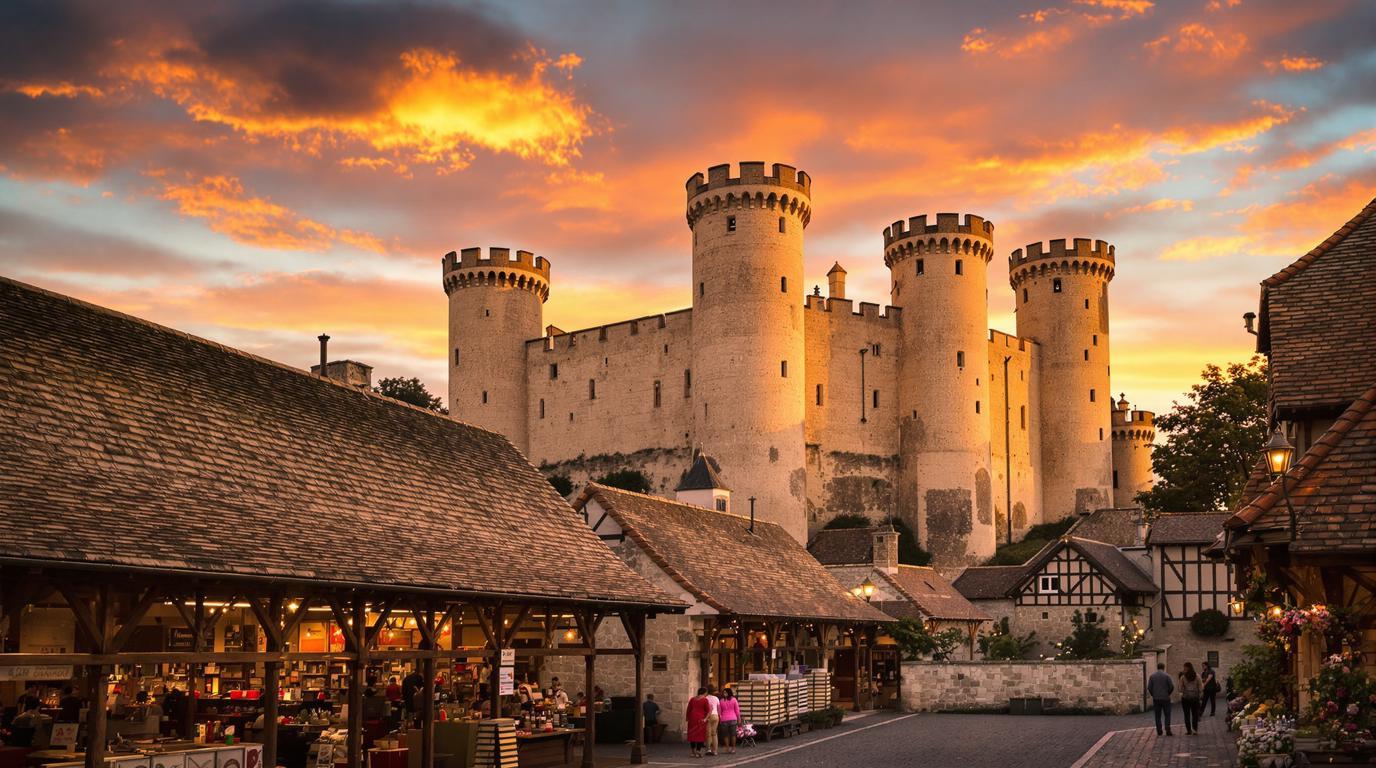In the heart of south-western France lies one of the country’s most enchanting secrets. Villebois-Lavalette, a medieval village perched on a limestone hill in Charente, dates back to the 12th century and remains remarkably preserved despite 900 years of history. Less than 800 souls call this gem home, yet it harbors treasures that would make cities ten times its size envious.
A castle with six centuries of stories
The imposing Château de Villebois-Lavalette commands attention from miles away with its six majestic towers. Built between the 12th and 17th centuries, this fortress has witnessed the evolution of military architecture from medieval defenses to Renaissance refinement. Recent restoration efforts have uncovered a 12th-century room that remained hidden for generations.
“When we removed the plaster from the walls, we discovered original stonework that hadn’t been seen in 500 years,” explains Bernard Laurent, local historian. “Each stone tells a chapter of French history.”
The triangular biscuit that became a cultural icon
Villebois-Lavalette proudly claims the title “Capital of the Cornuelle,” a distinctive triangular shortbread traditionally eaten on Palm Sunday. These buttery treats, sometimes filled with cream or chantilly, represent centuries of culinary tradition in the region.
Local baker Marie Dupont explains: “The cornuelle is more than a biscuit—it’s our heritage. Some families still use recipes handed down for ten generations.”
A 17th-century market hall that defies time
Constructed in 1665, the village’s market hall stands as a testament to architectural precision with its carved stone columns and original wooden beams. Every Saturday, this space transforms into a bustling market where local farmers sell produce virtually unchanged from what their ancestors might have offered centuries ago.
If you’ve experienced the charming coastal markets of southern France, you’ll find Villebois-Lavalette’s version equally authentic but considerably less crowded.
Explore like a medieval detective
For families seeking adventure, the village offers immersive escape games like “The Mystery of the Cornuelles,” where participants solve puzzles throughout the castle and village streets. This blend of history and entertainment provides a unique way to discover hidden corners that conventional tourists might miss.
Much like Switzerland’s medieval masterpieces, Villebois-Lavalette preserves its historical character while making it accessible to modern visitors.
Beyond the village: undiscovered countryside
The surrounding landscape offers scenic walks through sunflower fields and oak forests. The nearby Logis de la Forge gardens at Mouthiers-sur-Boeme showcase Renaissance-inspired design with terraced flowerbeds and gravel paths—a perfect afternoon excursion from the village center.
Those who enjoy transformative treks through stunning landscapes will find the gentle Charente countryside a less strenuous but equally rewarding alternative.
Tasting the terroir
Beyond cornuelles, the region boasts exceptional Cognac, Pineau des Charentes, Chalais Veal, and Barbezieux Chicken. The Saturday market offers opportunities to sample these specialties alongside regional cheeses and fresh-baked bread.
“Our soil gives everything a unique flavor,” says vintner Jean Moreau. “The limestone that builds our castles also lends character to our wines.”
Where time moves differently
Like Greece’s ancient stone villages frozen in time, Villebois-Lavalette exists in its own temporal dimension. Here, the sundial on the market hall still marks time as it has for centuries, and the annual traditions continue uninterrupted by modern distractions.
For travelers seeking tranquility away from tourist crowds (similar to hidden beaches untouched by tourism), this French village offers authenticity increasingly rare in our hyperconnected world.
When you stand atop the castle walls at sunset, watching golden light wash over limestone houses and distant vineyards, you’ll understand why Villebois-Lavalette isn’t just a destination—it’s a journey through centuries of French rural life, preserved against all odds in our modern age.
